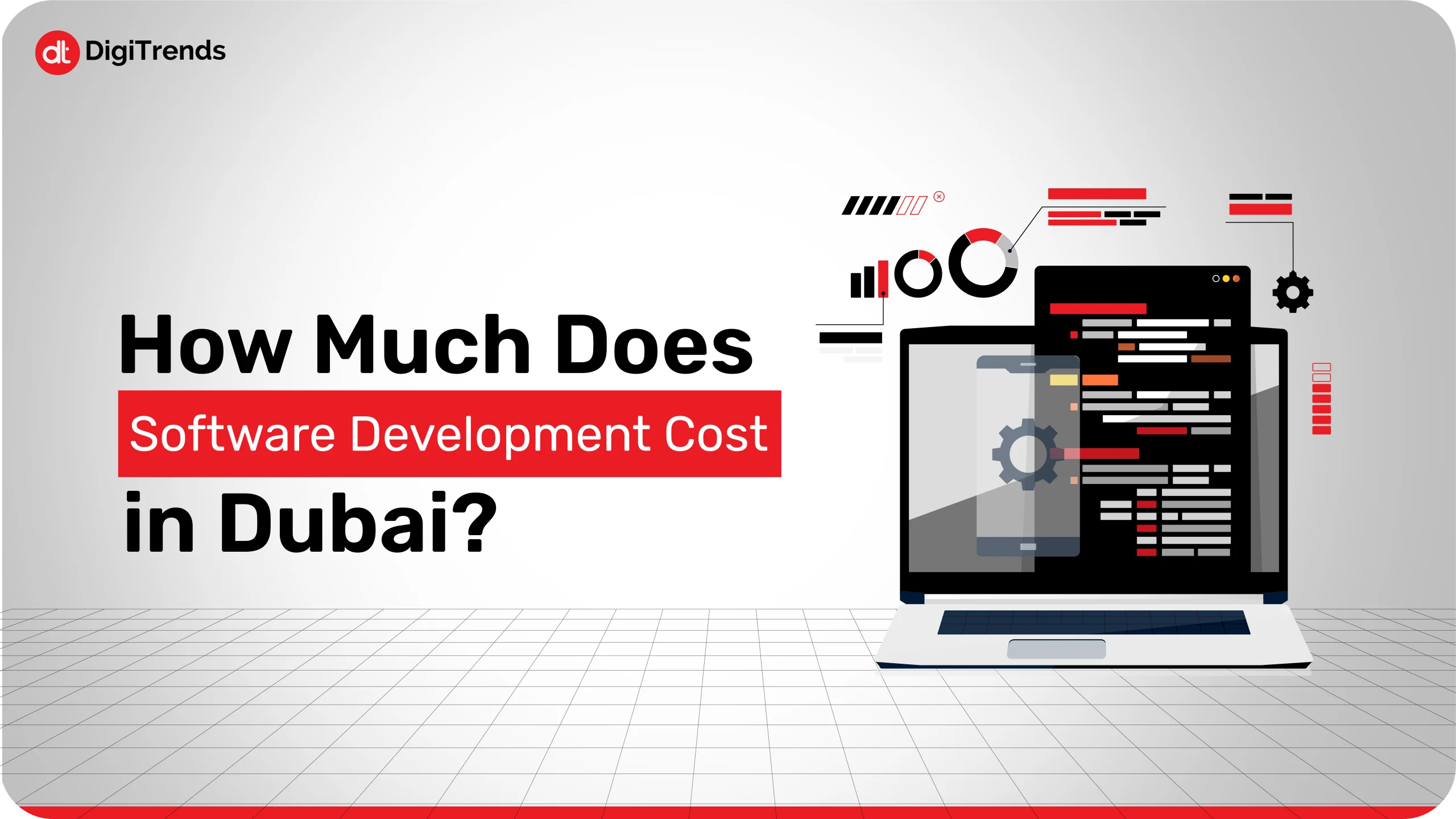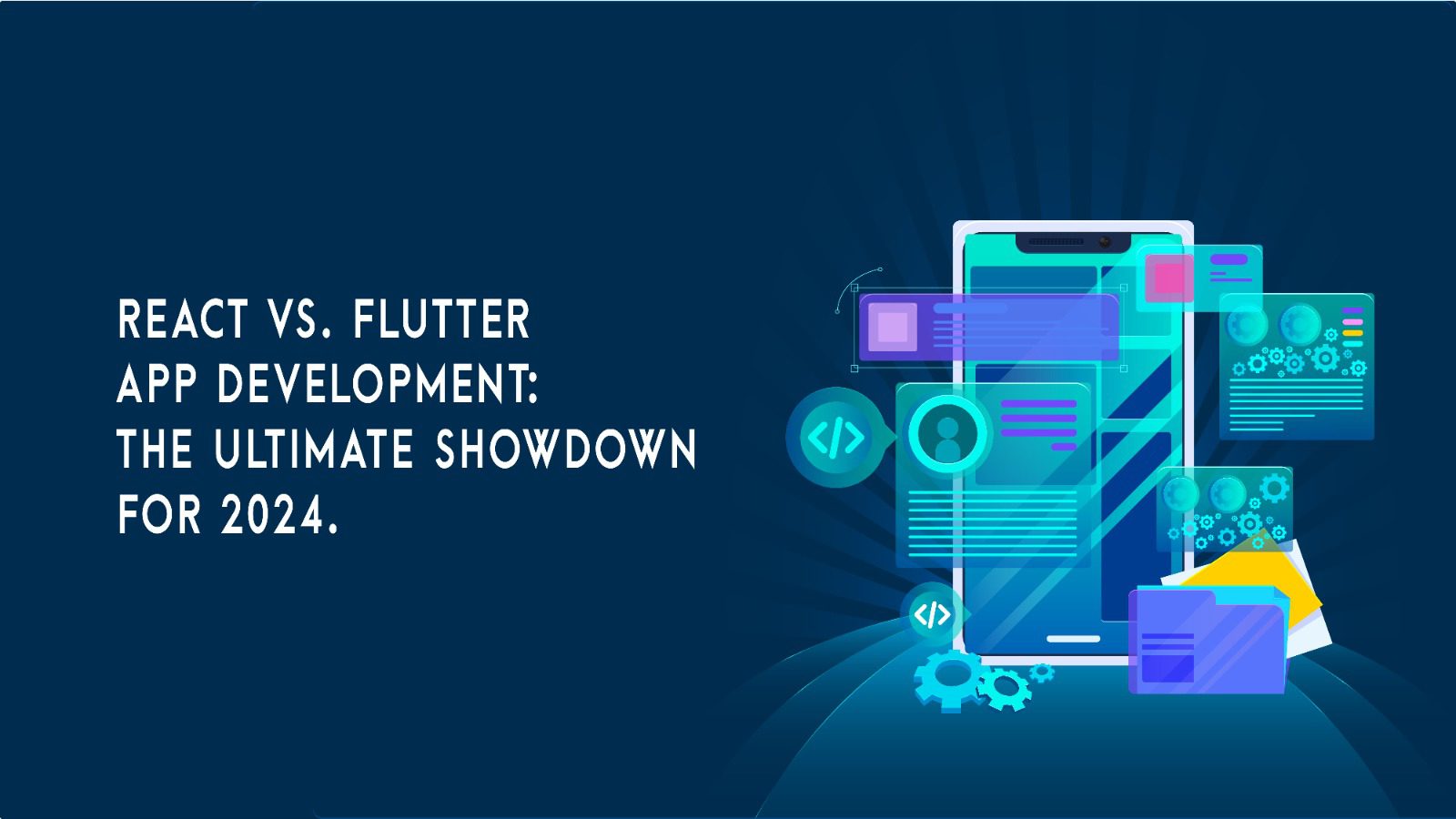
How Much Does Software Development Cost in Dubai?
Continue Reading

Building a high-quality app is crucial for businesses of all sizes. Flutter App Development plays a crucial role in this or React native app development as well.
But with so many options available, choosing the right development approach can be a challenge.
Here’s where cross-platform frameworks like React Native and Flutter come in.
These frameworks allow you to develop a single codebase that can be deployed on both iOS and Android platforms, saving time and resources.
This comprehensive guide dives deep into React Native and Flutter app development, exploring their advantages, disadvantages, and key differences.
We’ll equip you with the knowledge to make an informed decision about the best framework for your next mobile app project.
Flutter is an open-source framework created by Google that allows you to build beautiful, high-performance mobile apps using a single codebase.
It utilizes Dart, a modern object-oriented programming language known for its readability and ease of learning.
Here are some of the key benefits of using Flutter app development:
Flutter app development boasts a unique feature called hot reload. This allows you to see the changes you make to your code reflected in the app in real time, without the need to recompile and restart the app. This significantly speeds up the development process, letting you iterate and test your ideas quickly.
One of the biggest advantages of Flutter app development is its ability to create apps with performance that rivals native apps. Flutter app development uses a custom rendering engine called Skia, which allows for smooth animations, fast scrolling, and a truly native feel on both iOS and Android devices.

Flutter app development provides a rich set of customizable widgets that you can use to build visually appealing and interactive user interfaces. These widgets are pre-built UI elements that offer functionalities like buttons, text fields, sliders, and more. This extensive library saves development time and ensures a consistent look and feel across different platforms.
Perhaps the most significant advantage of Flutter is its ability to develop apps for both iOS and Android using a single codebase. This eliminates the need to maintain separate codebases for each platform, reducing development costs and time to market.
However, there are also some things to consider when choosing Flutter app development for your project:
Compared to React Native, Flutter is a younger framework. While it’s rapidly gaining popularity and adoption, the developer pool might be slightly smaller.
If your development team is unfamiliar with Dart, there will be a learning curve involved. However, Dart is known for its readability and similarity to other popular languages like JavaScript, making the transition smoother.
Flutter is an open-source framework created by Google that allows you to build beautiful, high-performance mobile apps using a single codebase.
It utilizes Dart, a modern object-oriented programming language known for its readability and ease of learning.
Here are some of the key benefits of using Flutter app development:
Flutter app development boasts a unique feature called hot reload. This allows you to see the changes you make to your code reflected in the app in real time, without the need to recompile and restart the app. This significantly speeds up the development process, letting you iterate and test your ideas quickly.
Imagine you’re working on a new social media app and want to experiment with different button designs or animation effects.
With hot reload, you can make changes to the code, hit a key combination, and see those changes reflected in the running app within milliseconds.
This removes the friction of the traditional development cycle, where you’d have to compile and deploy the app each time to see your changes.
One of the biggest advantages of Flutter is its ability to create apps with performance that rivals native apps. Flutter uses a custom rendering engine called Skia, which allows for smooth animations, fast scrolling, and a truly native feel on both iOS and Android devices.

Benchmarks consistently show that Flutter apps perform on par with native apps, especially in terms of frame rates and responsiveness.
This is a significant advantage, as users have come to expect a seamless and lag-free experience on their mobile devices.
A study by iKala compared the performance of a native Android app, a React Native app, and a Flutter app.
The Flutter app development achieved frame rates nearly identical to the native app, demonstrating its ability to deliver a high-quality user experience.
Flutter provides a rich set of customizable widgets that you can use to build visually appealing and interactive user interfaces. These widgets are pre-built UI elements that offer functionalities like buttons, text fields, sliders, and more. This extensive library saves development time and ensures a consistent look and feel across different platforms.
Flutter’s widget library is constantly expanding, and there’s a widget for almost any common UI element you can imagine. Additionally, Flutter allows for deep customization of these widgets, giving you the flexibility to create unique and visually stunning app designs.
Here’s a table showcasing some of the advantages of using Flutter for app development:
| Advantage | Description |
| Faster Development and Hot Reload | See code changes reflected in real-time, accelerating development iterations. |
| Native-like Performance | Achieve smooth animations and fast scrolling for a seamless user experience. |
| Rich UI and Widgets | Extensive library of customizable widgets for building visually appealing apps. |
| Cross-Platform Compatibility | Develop for iOS and Android using a single codebase, saving time and resources. |
However, there are also some things to consider when choosing Flutter for your project:
React Native is another popular cross-platform framework that allows you to develop mobile apps using JavaScript and React. It utilizes native UI components for each platform (iOS and Android), resulting in a more native feel compared to frameworks that use a custom rendering engine.

Now that we’ve explored the strengths and weaknesses of both Flutter and React Native, it’s time to see how they compare across various factors that influence framework selection for a mobile app development project.
Here’s a table providing a quick reference of how Flutter and React Native compare across these key factors:
| Factor | Flutter | React Native |
| Development Speed & Learning Curve | Potentially faster, steeper learning curve for Dart | Native look and feel less design flexibility |
| Performance | Excellent | Good, potential limitations |
| UI & Design | Highly customizable widgets | Can vary depending on Dart’s expertise |
| Developer Community & Resources | Growing, smaller community | Vast and established community |
| Cost of Development | Lower JS skills exist, which might increase native development needs | Lower JS skills exist, which might increase for native development needs |
The decision between Flutter and React Native ultimately depends on your specific project requirements and team skillset. Here are some scenarios where each framework might be a better choice:
It’s also important to consider the complexity of your app. For simpler apps, Flutter’s development speed and ease of use might be advantageous.
For highly complex apps with intricate functionalities, React Native’s access to native development might be beneficial.
Beyond the factors discussed above, here are some additional considerations when choosing a framework:
As mentioned earlier, the size and complexity of your app can influence framework selection. Consider the trade-offs between development speed and potential performance limitations.
Evaluate your development team’s skills and experience. If they’re comfortable with JavaScript, React Native might be a natural fit. If you’re open to learning a new language, Flutter can be a great option.
Think about the ongoing maintenance and support requirements for your app. Both Flutter and React Native have active communities, but the availability of support resources might differ.
Choosing the right framework for your mobile app development project requires careful consideration of your project requirements, team skillset, and long-term goals.
Both Flutter and React Native are powerful frameworks offering distinct advantages and disadvantages.
By thoroughly understanding the strengths and weaknesses of each framework, you can make an informed decision that sets your mobile app project on the path to success.